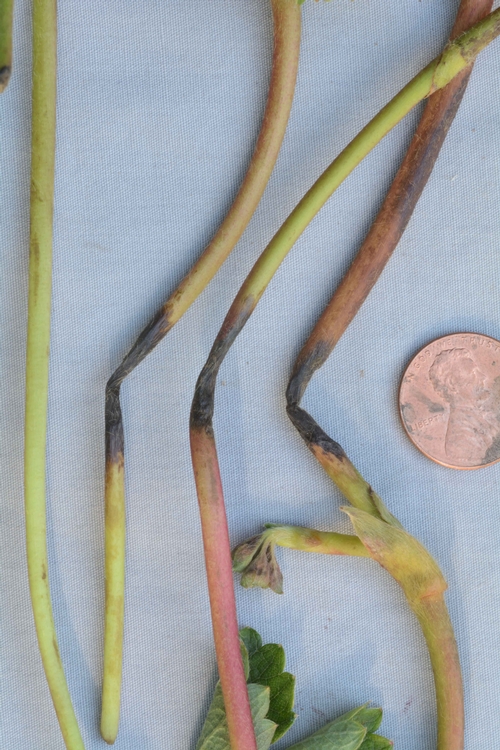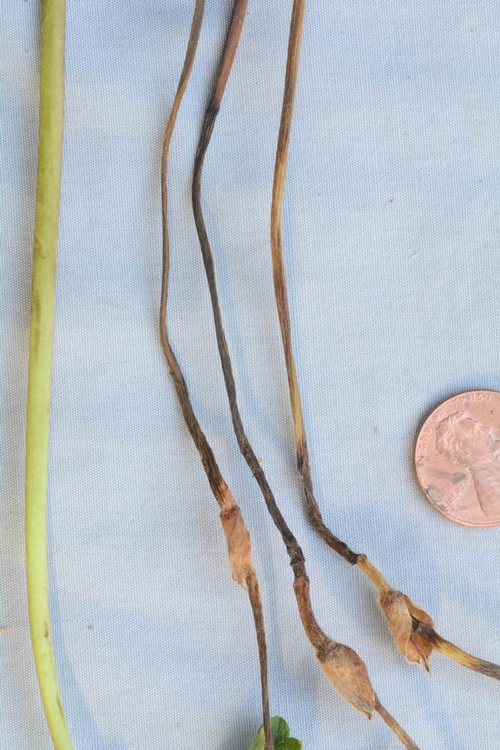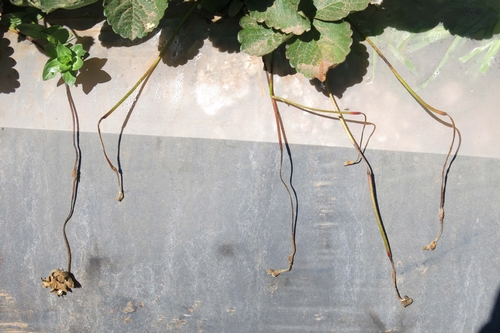Heat Damage to Strawberry Runners Mimics Anthracnose Disease
September 2015 brought on record high temperatures in agricultural fields in California's central coast. Parts of the Salinas Valley, Pajaro Valley, and Watsonville experienced daytime high temperatures that are rarely seen here. Not surprisingly, various central coast crops exhibited symptoms that were associated with heat damage. Strawberry plantings also showed symptoms of heat damage. One particular manifestation of injury to strawberry resembled anthracnose disease. Strawberry runners had dark brown to black lesions (Photo 1) that initially measured from1/4 to 3/4 inch long. In some cases the lesions could be much longer and could cause the entire runner to wither and dry up (Photo 2).
Field examination and laboratory analysis clearly eliminated the anthracnose fungus (Colletotrichum acutatum) as a cause of this symptom. Strawberry runner lesions never developed any signs (fruiting structures) of any fungal pathogen. In affected fields, thousands of runners were damaged, which is far too many for an anthracnose case in summer and without any rain. 90% of the injured runners were hanging down along the sides of the beds (Photo 3) where direct sun exposure and temperatures would be the greatest; only a few runners on bed tops showed any lesions. Timing was important as a determinant: runner lesions occurred a few days after the maximum daily highs had passed. Finally, extensive testing by the UC Cooperative Extension diagnostic lab resulted in 100% complete negative results for pathogens. Therefore this abiotic damage symptom poses no threats to the plants and is not associated with anthracnose disease.

Photo 1: Strawberry runners damaged by high temperatures showed dark brown to black lesions. Photo Steven Koike, UCCE.

Photo 2: Strawberry runners damaged by high temperatures could wither and dry up. Photo Steven Koike, UCCE.

Photo 3: Large numbers of heat-damaged runners were found along the sides of the beds. Photo Steven Koike, UCCE.